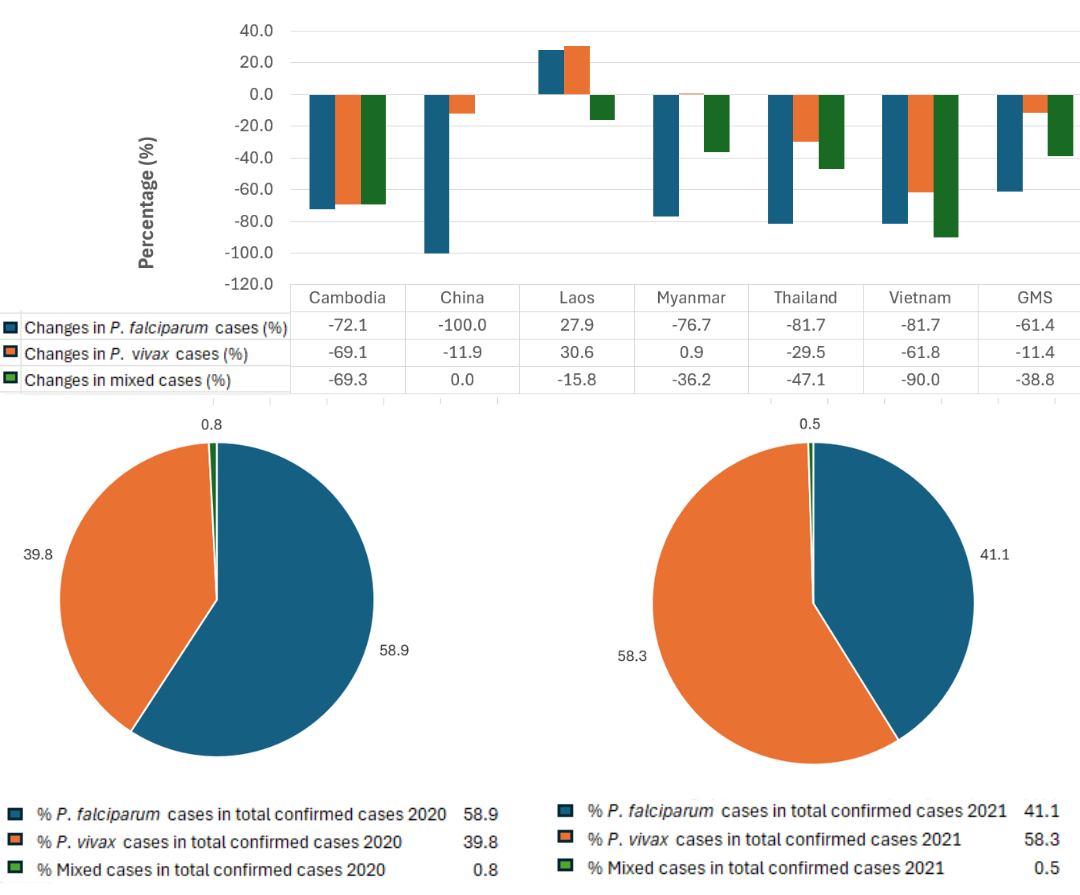Evaluation of the Program’s Efficacy
National Program Efficacy Compared to Other GMS Countries
Benchmarking against the Việt Nam-specific MME Program for comparison, a key milestone for each GMS region is to enter the elimination phase for all first subnational level entities by 2020, with an annual parasite incidence of < 1/1,000 (WHO, 2015). In the aggregate report of the national plan for 2020, the parasite rate per 1,000 was identified as 0.038 (MoH, 2020), demonstrating the capability of Việt Nam’s malaria control strategy to surpass the minimum target established by the MME. In accordance with this accomplishment, the MME Program revealed a three-fold decline in malaria incidence in Việt Nam over a 12-month period – from 1,421 confirmed cases in 2020 to 459 one year later (Tables 3 & 4).
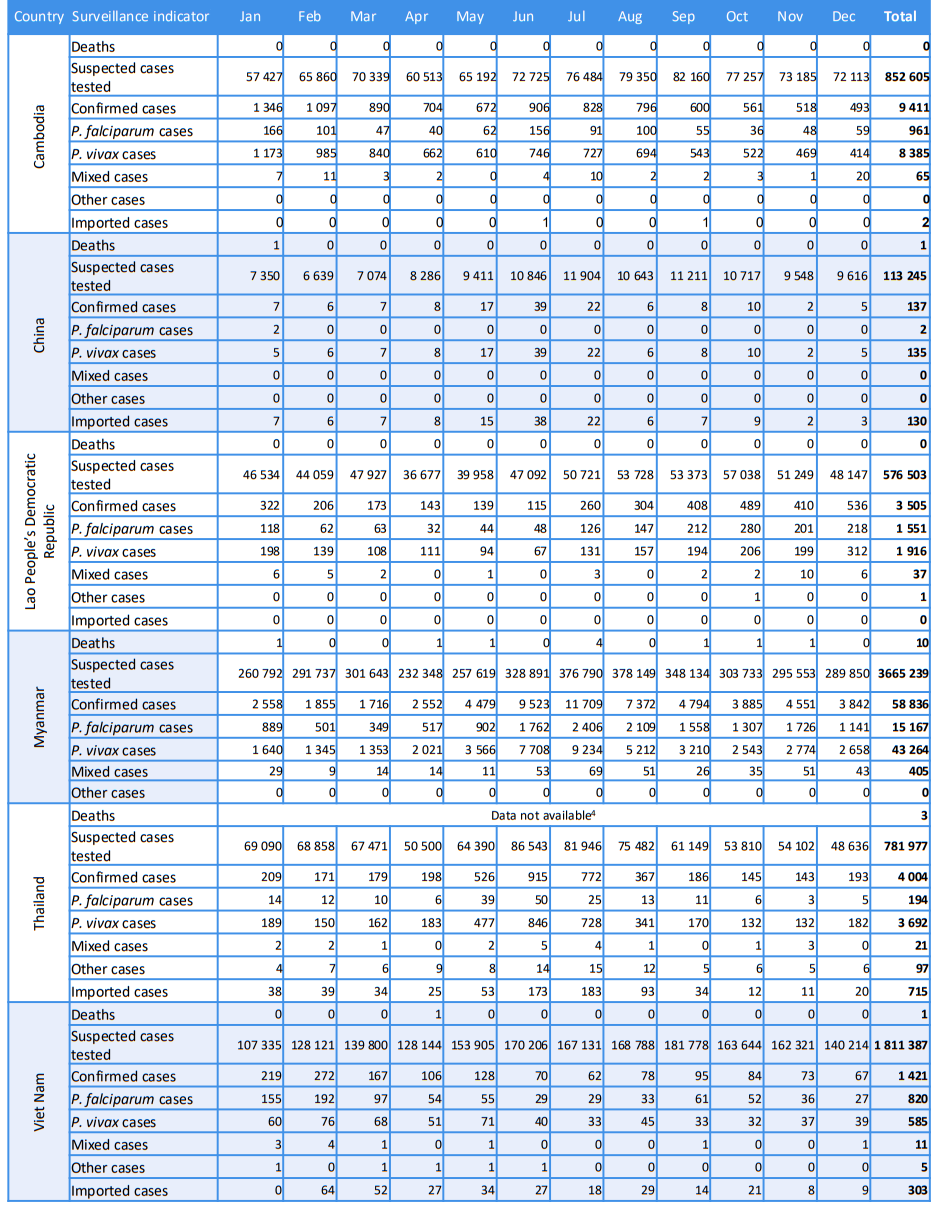
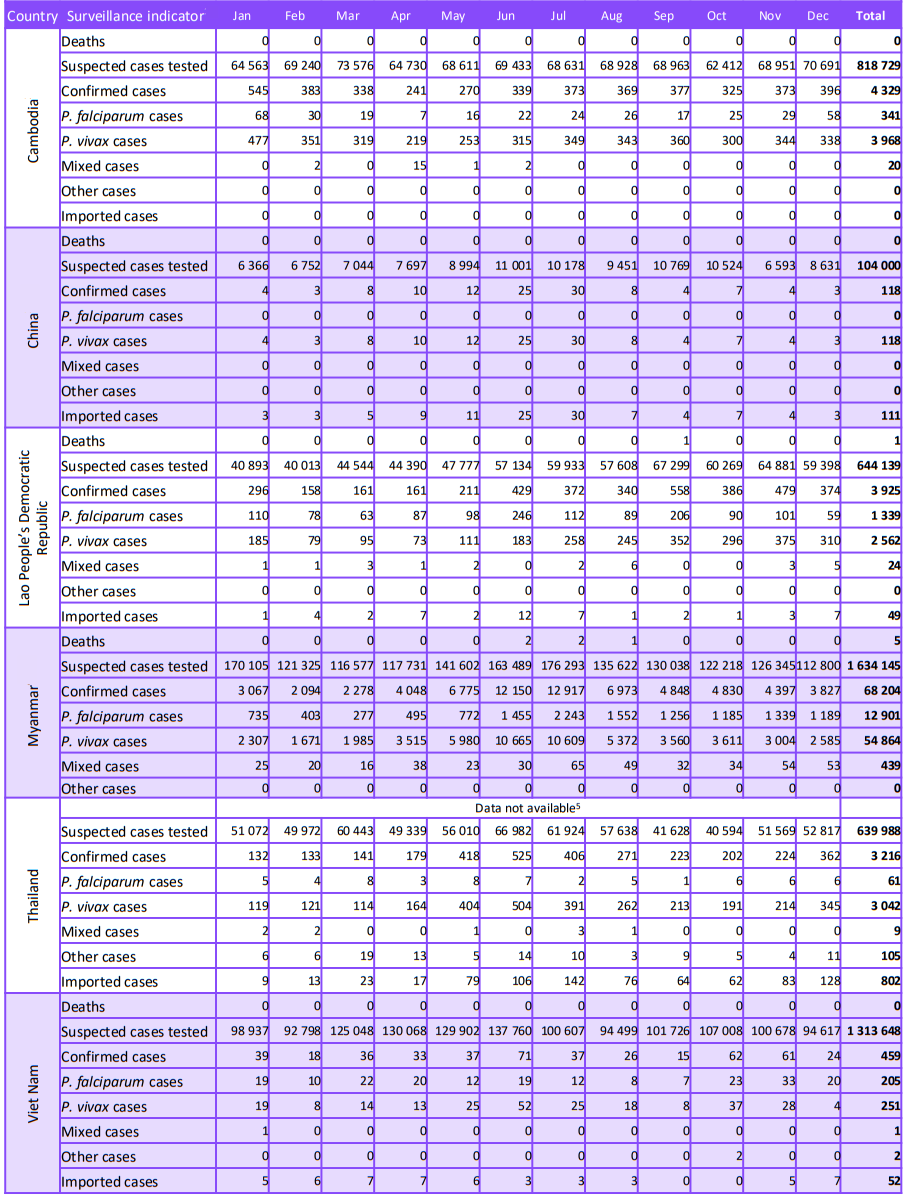
In general, all six GMS countries are working well towards the malaria elimination target set by the most recent strategy for the period 2015–2030. Encouraging results also provide motivation for this subregion to make progress in preventing the spread of malaria through concrete actions such as drug efficacy monitoring and local modifications to the national plan. In the most recent WHO statistics for the status of MME countries, only nine months (January–September) in 2021 are available; hence, the same period of 2020 was used as a comparator. A combined 20% reduction in malaria incidence, from 61,307 in 2020 to 48,647 cases in 2021 (Figure 7), was significantly achieved by the entire GMS region (Tables 3 & 4). Focusing on Việt Nam, the NMCEP brought malaria cases to a minimum, with only 312 cases reported in the first nine months of 2021. This number is roughly one-third of the previous year’s figure, marking the largest step among all the GMS countries for total confirmed cases (Figure 7).
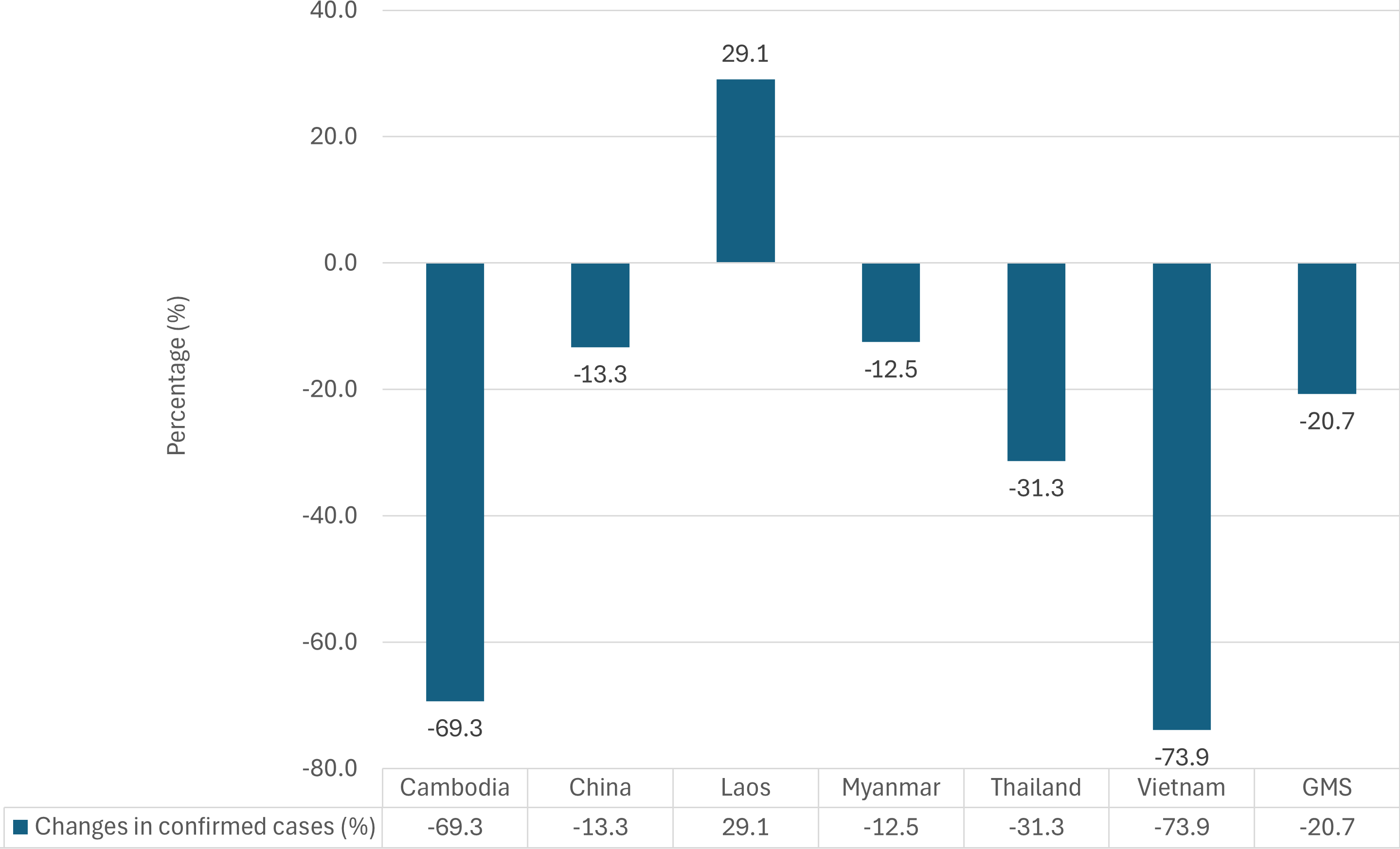
In addition to reducing malaria incidence, curbing malaria-related deaths is also considered a priority by all GMS countries. Mirroring the trend of confirmed cases, the death toll also experienced a 50% reduction, from 10 to 5 between 2020 and the following year. By reducing from one death to none, Việt Nam was one of three countries, together with Cambodia and China, to reach the zero death target. Myanmar, which recorded the highest number of deaths in 2020, experienced a significant improvement by halving its death toll in 2021. In contrast, in Laos malaria mortality increased by one in 2021 (Figure 8).
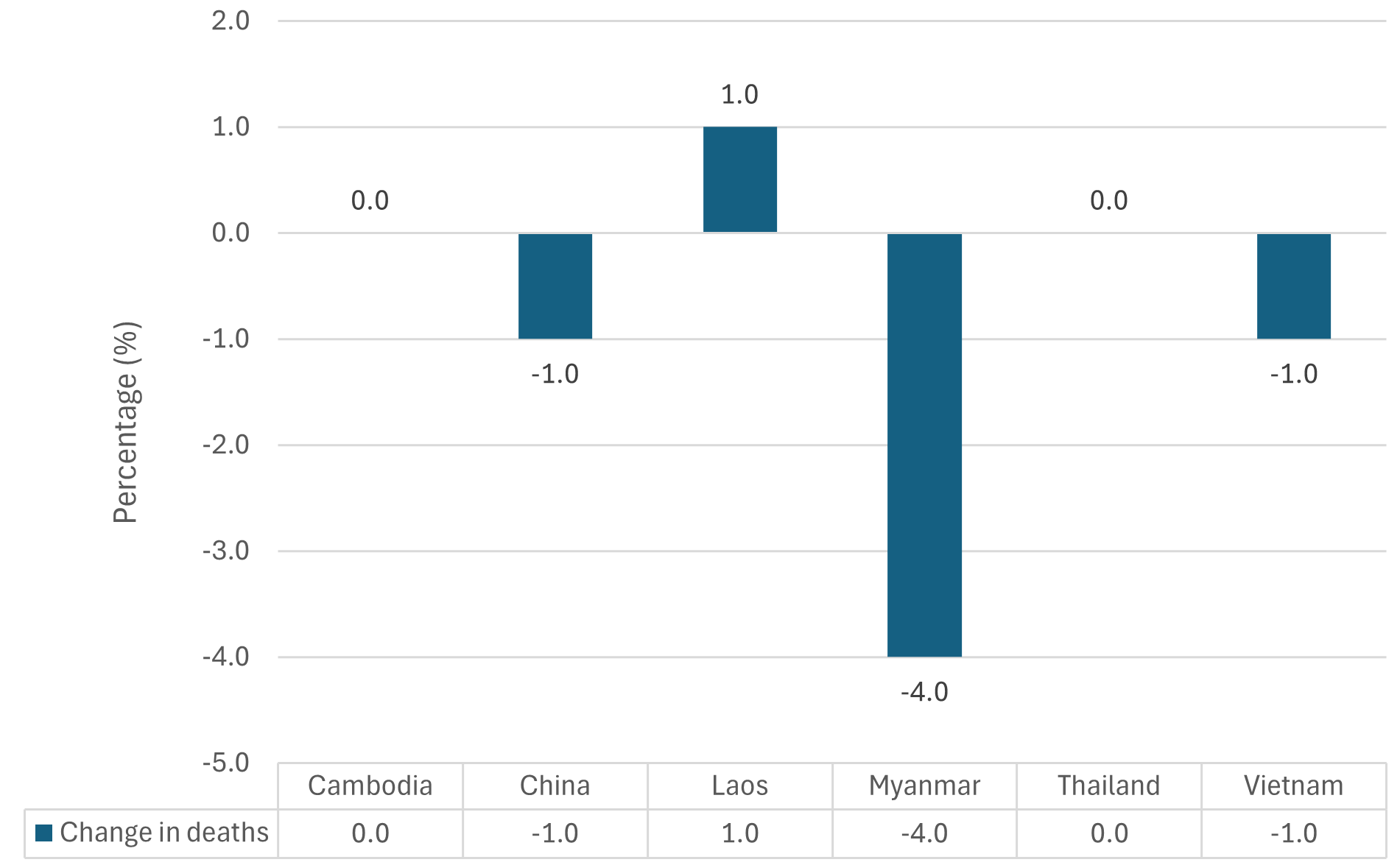
It should be noted that in 2020, the effectiveness of the program stagnated across GMS countries as malaria-related conditions did not experience a drop in accordance with previous recent years (WHO, 2021a). This could be attributed to external factors, not least the COVID-19 pandemic (WHO, 2021b). Concerning incidence rate, Figure 9 shows a sharp downturn in Cambodia (-0.85%), while China (-0.01%), Thailand (-0.07%) and Việt Nam (-0.06%) all saw a more modest change. Although Myanmar reported improvements in managing mortality from malaria, this country’s rising incidence rate of 2.21% remains a major cause for concern.
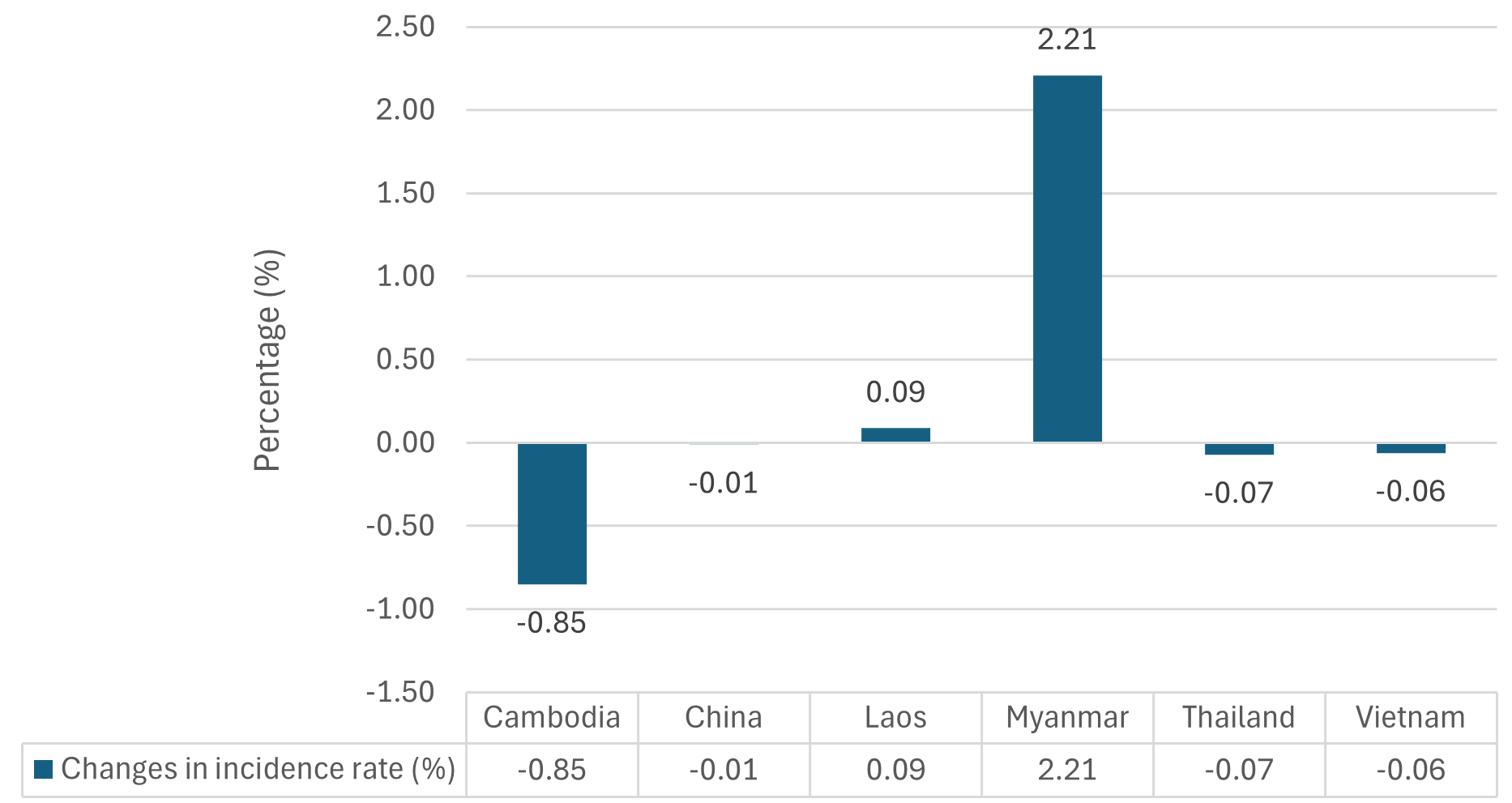
As previously noted, P. falciparum shows an extensive capacity to evolve under the selective pressure of suboptimal treatment with antimalarials to become drug-resistant. Notwithstanding this concerning characteristic, in five out of six GMS countries the number of P. falciparum infections declined by 61.4% from 2020 to 2021 (Figure 10). China achieved the P. falciparum elimination goal in 2021 and was closely followed by Việt Nam with an 81% drop. Likewise, incidence of P. vivax also experienced an overall downturn, despite being easily transmissible and challenging to control (Howe et al., 2016). Cambodia’s national strategy limited the spread of P. vivax, demonstrated by a substantial contraction by 69.1% in case numbers, and similarly successful in Việt Nam, which observed a 61.8% decrease. While the proportion of P. falciparum-related cases decreased in 2021 compared to 2020, the reverse was true for P. vivax infections. This pattern demonstrates that P. falciparum elimination is well-focused and achievable by 2025. Nonetheless, it is recommended that the Vietnamese Government invests more attention to combat P. vivax, an extremely hard-to-control species. Combining all available data as a measure of efficacy, the NMCEP is working well towards achieving WHO targets. Furthermore, since most GMS nations are approaching the malaria elimination phase, collaborative support through continuous integration of cross-border surveillance systems is necessary, together with efficient local processes for investigation and emergency responses within each country.
